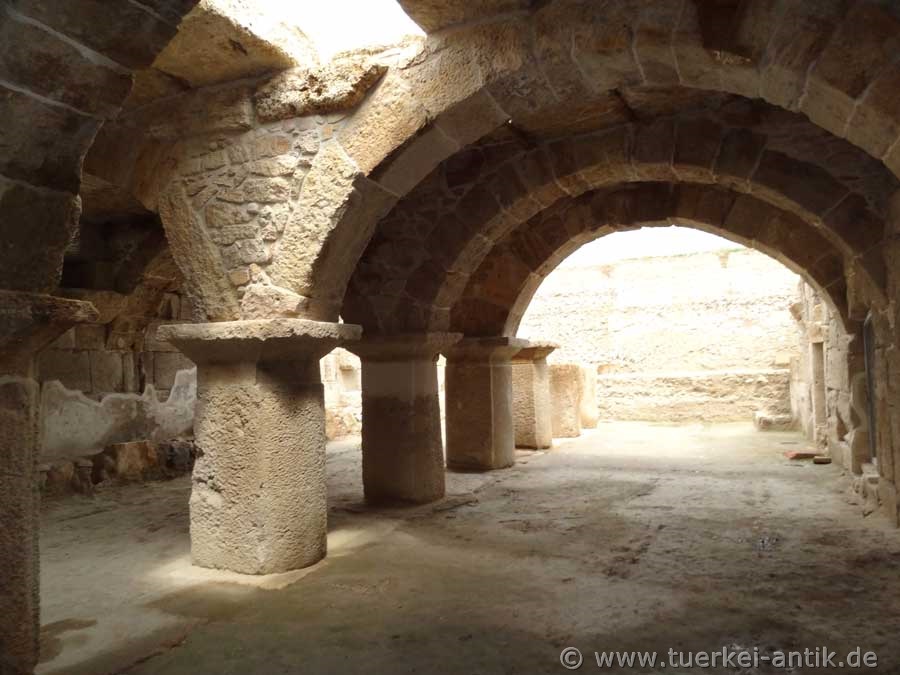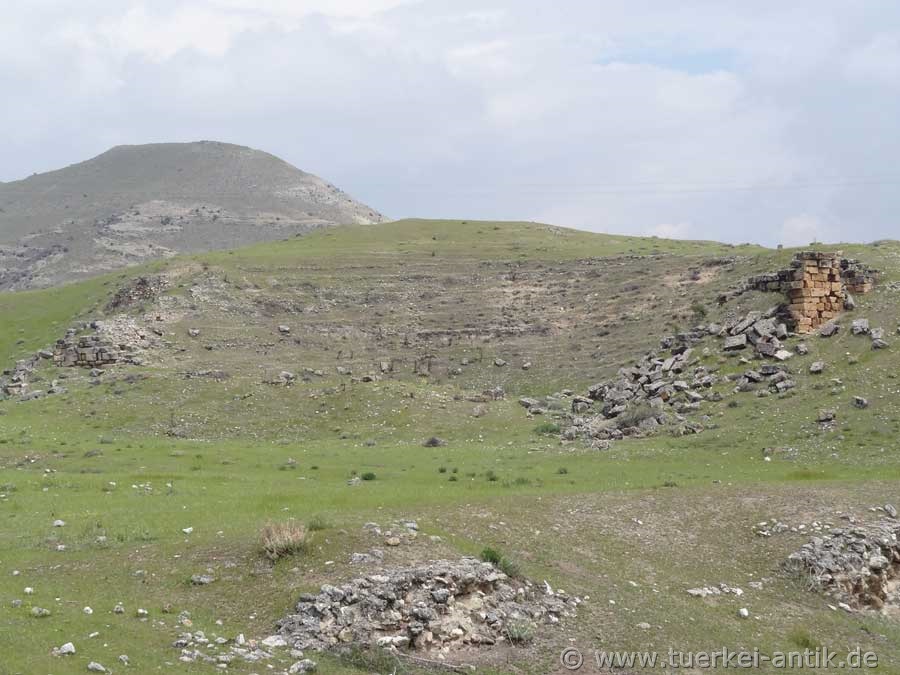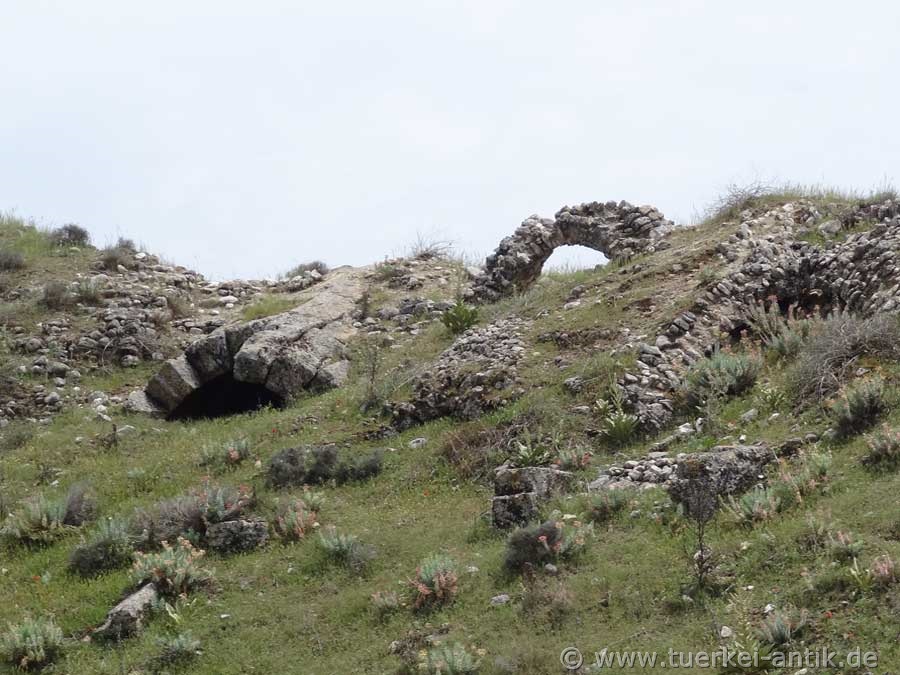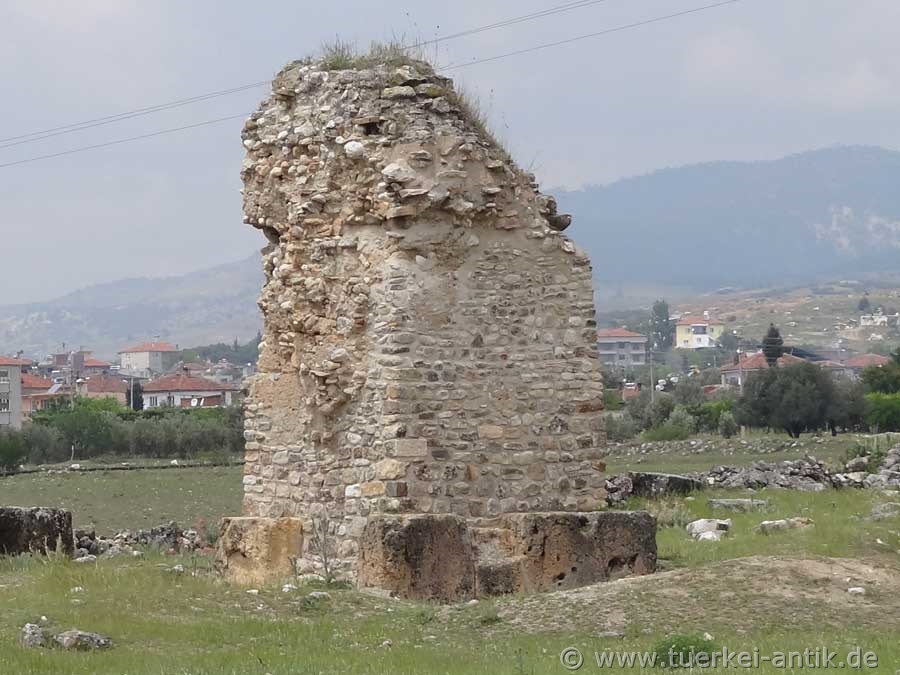 |
| Tripolis ad Maeandrum in Phrygia | |||
|
|
|
||
| The Orpheus fountain at the intersection Hierapolis- and Column street | |||
|
Although the foundation of the city of Tripoli dates back to the Hellenistic period, archaeological finds prove that the area was inhabited as early as 4000 BC. It was conquered and settled by Hittites, Phrygians, Greeks, Romans, Seljuks and Mongols. |
|||
|
|
|||
| Vaults under the Agora | |||
|
Located at the crossroads of the ancient regions of Phrygia, Caria and Lydia, the city was initially founded under the name Apollonia on Lydian territory. The name of the city changed over time in Antoninopolis, Neapolis. Since people from all three regions settled in the city, it was renamed Tripoli in the 1st century BC. |
|||
|
|
|||
| Column road at the Agora | |||
|
This name remained until the city was abandoned in the 7th century AD. In 494 AD the city was partially destroyed. This event marked the beginning of the gradual depopulation of the city, culminating in the Sassanid raids in the sixth and seventh centuries. The inhabitants retreated to the town of Direbol, only 8 km north of Tripoli. Situated on a ridge, this place could be defended better. |
|||
|
|
|||
| The theatre not yet excavated | |||
|
|
|||
| Buried access to the spectator terraces in the theatre | |||
|
|
|||
|
The first records mentioning Tripoli date back to Pliny the Elder (1st century AD), who described the city as an Lydian settlement on the river Meander. Claudius Ptolemy (2nd century AD) and Stephen of Byzantium (6th century AD) described Tripoli as a Carian city. |
|||
|
|
|||
|
|
|||
| Roman Bath | |||
|
|
|||
|
Tripolis reached its heyday and the height of its power in Roman times, especially after the 2nd century AD. During this period, new public buildings were erected, including the city gates, streets, the baths, the stadium, as well as the theatre and the Bouleuterion. Most of the architectural structures visible today date from Roman and Byzantine times. |
|||
|
|
|||
|
|
|||
|
Pillar of the Philadelphia Gate |
|||
|
The city walls date from Byzantine times. The walls on the eastern side were built at the turn of the fourth and fifth centuries AD. The original length of these fortifications was more than 1 800 metres, of which only small sections are at present. It was over 6 metres high and up to 2.5 metres wide. |
|||
|
|
|||
| Rock tombs in the necropolis in the east of the city | |||
|
The wall built in the north and west of the city was built in later Byzantine times. About 1.2 km of this wall are preserved. The fortress and the round tower on the Acropolis of Tripoli, high above the city, were also built during this period. These fortifications formed a line of defence against the Ottoman attacks in the thirteenth century. The south wall clearly shows that these fortifications were erected in a hurry using existing buildings. |
|||
| Photos: @chim, Monika P. | |||
| Translation aid: www.DeepL.com/Translator | |||
| Source: Wikipedia and others | |||
|
|
|||





